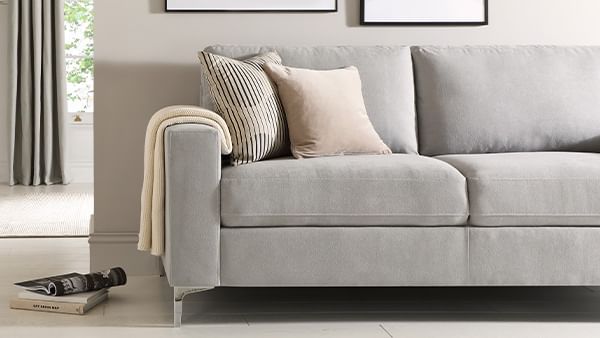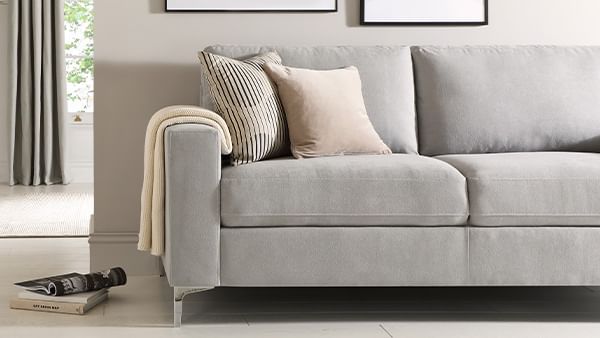Caring for wooden furniture
No matter what style you choose for your wooden furniture, you will need to take proper care of it to ensure it enjoys a long life.
Furniture defines the style of a room as much as the colour scheme on the wall and floors, and wooden furniture is a great way to create any number of themes.
Rustic, traditional and antique looks are simple to achieve, but so are sleek, professional and minimalist styles – the choice is yours. But no matter what style you choose for your wooden furniture – dark or light wood, ornate designs or simple lines, a smooth varnished look or earthy untreated feel – you will need to take proper care of it in order to ensure it enjoys a long life, and stays looking the way you want it to.
Positioning is everything
Something as simple as where in the room you place a piece of wooden furniture can have some major effects on its appearance and longevity. Take care to place wooden furniture so it is as far away from sources of heat as is practical, and try to keep it out of direct sunlight if possible. It may sound impractical, but you don’t need to go over the top with evasive positioning – just avoid placing wooden items against radiators or under windows that get a lot of light and warmth, as these aren’t the best spots for wood.
Firstly, extensive exposure to sunlight can lead to sun-fading, and a wood that begins to lose its lustre in unappealing patches. Sunlight can bleach the colour out of wood fibres over the years, as well as cause the finish to separate from the wood itself, and the only way to fix it is with a reconditioner or polish. While these repairs can be effective, it won’t quite restore something to exactly how it was before.
Heat can also take its toll on wood. Humid heat in summer will cause wooden furniture to expand and warp, whereas the dry heat of the radiators in winter can cause woodwork to contract, resulting in cracks, splits and wobbly table legs.
It will take a long time for this to happen, but older wooden furniture will have already weathered a lot in its time. Similarly, if you want your new wooden features to stay around long enough to become antiques themselves, you’ll need to take care of them from the beginning!
Keep it clean
As well as generally being good house-keeping, making sure your wooden furniture stays clean will also help it last a lot longer. If dust or grime builds up for long enough, it can start to abrade the finish, resulting in a worn, scratched look.
Be sure to dust regularly with a feather duster, or a soft cloth. You could dampen cloths incredibly lightly to ensure that dust doesn’t re-settle, but you should always run the hoover around as soon as you’re done to prevent the spread of dust elsewhere in the home. For dirtier surfaces – particularly stains – take a slightly tougher approach with warm water and washing-up liquid, and then give the surface a wipe down with paper towels. Avoid using stronger cleaners like white vinegar or kitchen and bathroom products as these could corrode the finish, achieving the exact opposite of what you’re setting out to do!
If you are having to use liquid of any kind to clean your wood furniture, always wash in the direction of the grain and, whatever you do, don’t let liquids get in to cracks and scratches! Once it’s under the wood’s finish, the damage is done – if this happens regularly, the wood will start to wear away from the inside.
To really make sure your wooden furniture stays clean and protected, use a wax polish. Dab a small amount at a time on to a cloth and then buff it into the surface slowly, making sure to go with the grain. Not only will this seal the wood a little better to prevent the effects of moisture, it will make for a nice and shiny finish too.
Repair jobs
When your wooden furniture is damaged, it can be quite easy to give it a bit of care and attention to nurse it back to health. The most common – and for some, the most serious – of crimes is the mug-ring. Many wooden table tops have fallen to the ring, and the easiest way to fight it is to instigate a strict coaster policy on all wooden furniture.
Still, things don’t always go to plan, and you never know when a rogue mug-ring might strike. Scrubbing away as you would at a normal stain can do more harm than good – instead, mix a solution of water and baking soda, and then use a cloth to rub at the mark. Alternatively, spread white toothpaste around the ring, and then scrub it off – it sounds odd, but it does work. In both cases, don’t scrub too hard as you could damage the actual finish too.
For scratches and nicks in the woodwork, a shoe-polish of the same colour will help cover them up. Larger dents can be filled with wood-filler, applied gradually in thin layers, and then polished over in the same way as a smaller crack. For an extreme fix in the event of multiple scratches and dents, you could simply sand surfaces down until they are level and then apply a varnish for an all-new finish.
Unfortunately, once wooden furniture has experienced a major crack, there’s not a lot you can do for it. Cracks in surfaces can be tackled with wood filler, which will keep it going for a while, but cracks in structural areas such as table legs are harder to fix – it will be very noticeable, and won’t regain the sturdiness lost in the breakage.
Once your wooden furniture begins to crack, it is unfortunately on the way out. You’ll enjoy a few more years of a very rustic look, yes, but if that’s not the style you’re going for then it may just be time for a change. Still, if you follow our tips for caring for wooden furniture, you should be able to put off its demise for a long time.





